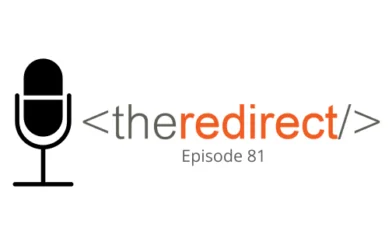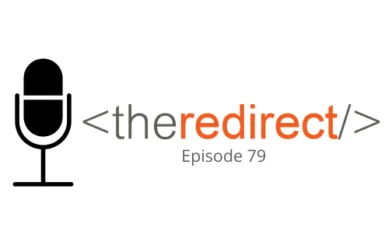Episode 22 / November 3, 2017
Listen now:
In episode 22, we welcomed our first guest to the podcast, advertising and public relations professor and communications professional Adrienne Wallace. Discussion included how “how to” content can create customer loyalty at all levels of the funnel, Facebook testing the “Explore” feed to separate brand pages’ content and promoted posts, and tips for developing better content that targets more searches through keyword clustering.
Create “How To” Content to Build Customer Loyalty
As SEOs, our content marketing strategy revolves around meeting customer needs by focusing on what they’re actually looking for online via search. We can gauge user intent by analyzing search behavior, and we know people aren’t always looking to buy; therefore, it’s important to consider different types of content that will be valuable for visitors and for the brand in the long run. The Content Marketing Institute recently broke down a presentation by Eric Hess, senior program manager for content marketing at REI, on how certain types of content can generate customer loyalty.
Hess recommends brands expand their content marketing focus, if they haven’t already, from strictly sales or lead generation to include what he calls “shopping-related content, post-purchase content, and between purchase content.” These can be in the form of “how to” (informational) content that gives your customer something different, and more interesting, than a sales pitch.
Post-purchase and between-purchase content help to build customer loyalty by providing helpful information. These could include general skills and knowledge, tips and tricks, and location guides – and though the point for these categories is to not focus on the product or service, they could be referenced in the piece. The point is to offer value to your current customers so that they’ll keep you in mind and be more likely to purchase from you again. Even better, if customers end up sharing your content with non-customers, this creates touchpoints with your brand that would not have existed otherwise.
From a literal, search perspective, the phrase “how to” is HUGE for informational search queries, and building content to meet these queries is a great opportunity to be available to customers when they’re searching for help with something related to your brand. And if you’re creating “how to” content, don’t forget to aim for the featured snippet.
Future-Proof Keyword Research with Keyword Clustering
Gone are the days of selecting a keyword phrase and developing content around that in hopes that it ranks. You’ve evolved your ways, right? This had been best practice by a number of SEOs for years, so if you’re still partaking in this method, there’s hope for you yet.
The reality is that Google is much smarter now than ever before, thanks to current algorithms and machine learning powering the search engine to the point it understands relational data and how you interact with search.
In her recent article on Search Engine Watch, Ann Smarty delivers insights on concepts of keyword clustering and the positive outcome you can see with this approach.
The concept with keyword clustering is building out the targeted phrases thematically, meaning they are highly related to one another. This allows you to cover more within a single page than having content upon content focused on single phrases. As a result, you broaden your topical search relevancy.
Examples of Keyword Clustering:
Michigan Ski Resorts (baseline seed longtail phrase)
” ” ” with tubing
” ” ” with lodging
” ” ” with childcare
” ” ” near Chicago
One can easily group these types of phrases together in a singular piece of content that can target multiple search queries, as well as multiple audiences – from an individual who is planning a family ski vacation seeking other activities for their group, to those seeking specific on-hill and off-hill activities.
From this week’s guest, Adrienne Wallace:
Publisher Panic! Facebook “Tests” Public/Personal Content Separation, Freaks Out Free World
What do publishers Tech Republic, The Guardian, Mashable, Slate, Daily Dot, BBC, TechCrunch, and AdAge have in common? They all reported with panicked headlines the fact that Facebook is running tests on what some are referring to as a “future global product.”
Alright, alright…calm down, everyone. Facebook experimented with a “test market” which included Sri Lanka, Bolivia, Slovakia, Serbia, Guatemala and Cambodia to move all content posted by brand pages (organic/unpaid) which previously showed in users’ “news feed” into a new, separate feed called “Explore.” The online community is affectionately referring to this as Explorageddon, but in a move that Facebook Head of News Feed, Adam Mosseri, alleges was sparked by user requests to satisfy user needs, the content was separated as a way to allow users to get more news from their friends (nevermind, I guess, that also in the news feed would remain all paid-for content/ads, etc – details, details).
So while I don’t think there is necessarily any need to panic big time, I do think it’s a time to dissect your FY18 budget, plan ahead, and be sure that you have allocated appropriate funds to online paid resources. I mean, why would Facebook test it if it weren’t in the pipeline for roll-out, even if it is not “currently?” Answer: They probably wouldn’t. Plus, won’t this be a great time to find out how truly boring your network/friends really are? I personally can’t wait to escape first day of school photos in my newsfeed and will gladly go Explore elsewhere.
Thanks for tuning in! To catch future episodes of The Redirect Podcast, subscribe on SoundCloud, iTunes, or Stitcher.




